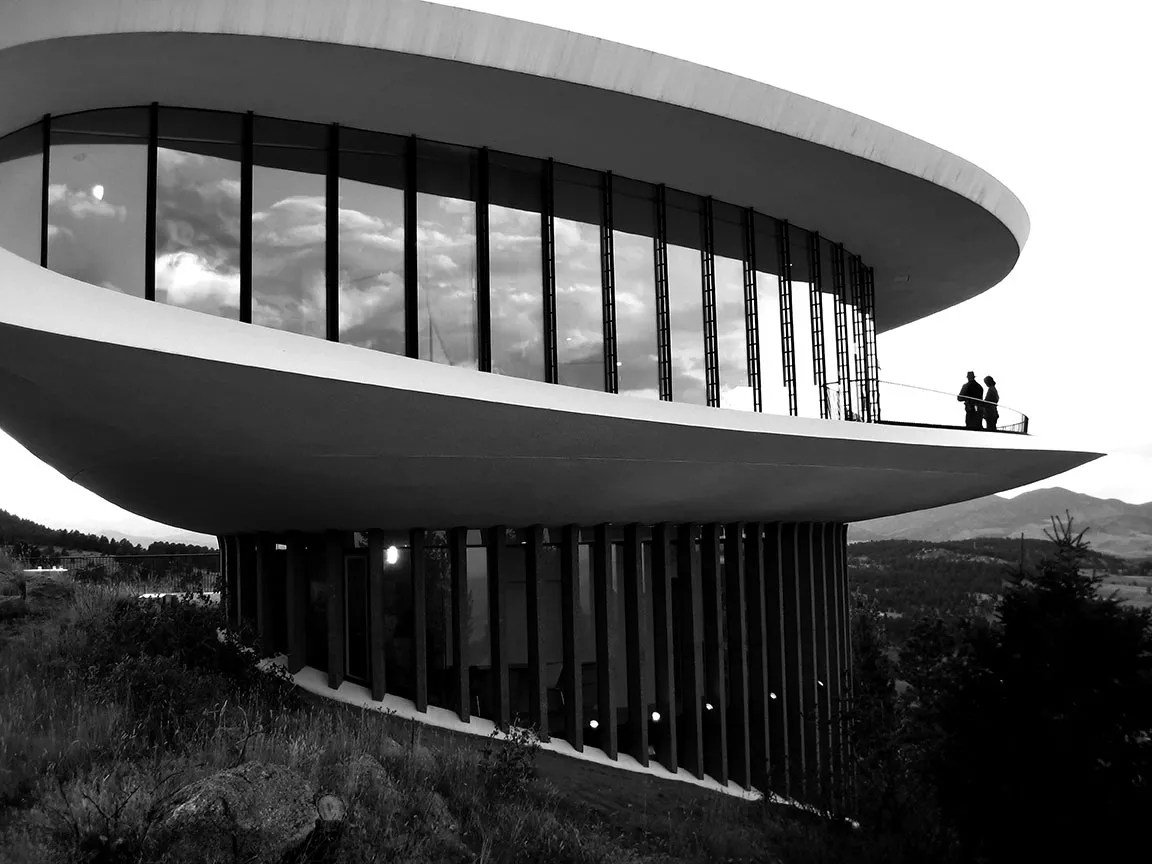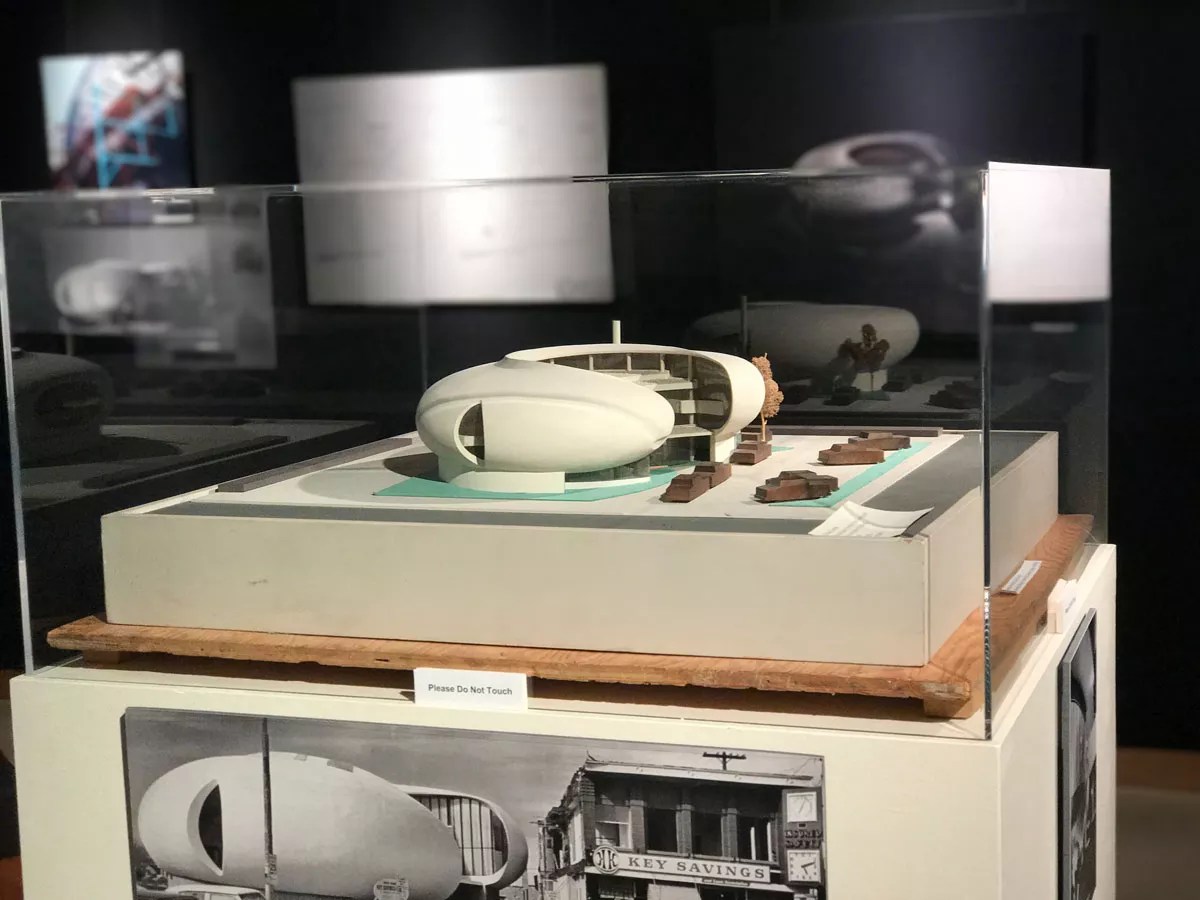
Nicholas Antonopoulos

Audio By Carbonatix
Visionary Denver architect Charles Deaton erected a handful of remarkably original structures in the middle of the twentieth century. His most famous work, the “Sculptured House” in Genesee, is unofficially known as the Sleeper house; it became world-famous after a location scout for Woody Allen’s Sleeper gave it a supporting role in the 1973 film (see my 2003 piece “Jetsons in Jeffco“).

Charles Deaton
CR Barnett
Although “Sculptured House” makes an appearance in The Sculptured Buildings of Charles Deaton – a show dedicated to the late architect in the intimate Sound Gallery of the Museum of Outdoor Arts – the main focus is an equally radical design: the spectacular Community Banks of Colorado building at 3501 South Broadway in Englewood. Just a few blocks from the MOA, the building was originally commissioned by Key Savings and Loan. The concrete-over-steel structure has an extremely complex form; viewed from the south, it’s egg-shaped, while from the north, it’s a two-story spiral curve. The curve envelops steel and glass window walls that follow the building’s form, and as it wraps around itself, the ends define an integral forecourt. The centerpiece of the show is the original plaster model for the bank that’s extremely close to what was actually built – which is not typically the case.

Charles Deaton
MOA/Collection of Charles Deaton and Nicholas Antonopoulos
The model is surrounded by graphic panels that tell the stories behind the Englewood structure, “Sculptured House” and another bank, this one in Casper, Wyoming. The show also includes photos, among them construction shots that reveal the tremendous armatures needed to pull off these organic abstractions masquerading as buildings. There are reproductions of Deaton’s stunning presentation drawings done freehand in colored pencil on flat black paper, as well as reproductions of the structural drawings, which remind us that architects and engineers used to employ compasses and slide rules instead of computers, making Deaton’s creations all the more astounding.

The original plaster model made in 1965 for Charles Deaton
Courtesy of the Museum of Outdoor Arts
Among the most interesting of the show’s inclusions is an extended video interview conducted by Hugh Downs of Deaton himself – an elegant and courtly man – in which the architect describes his process and practice.
The exhibit was co-curated by Tim Vacca, MOA’s director, and historic-preservation consultant Diane Wray Tomasso, and is meant to coincide with the Englewood bank building’s fiftieth anniversary; it runs through September 22 at the Museum of Outdoor Arts, 1000 Englewood Parkway in Englewood. From 10 a.m. to 4 p.m. on Thursday, September 7, there will be an open house at the bank itself. Call 303-806-0444 or go to moaonline.org for additional information.